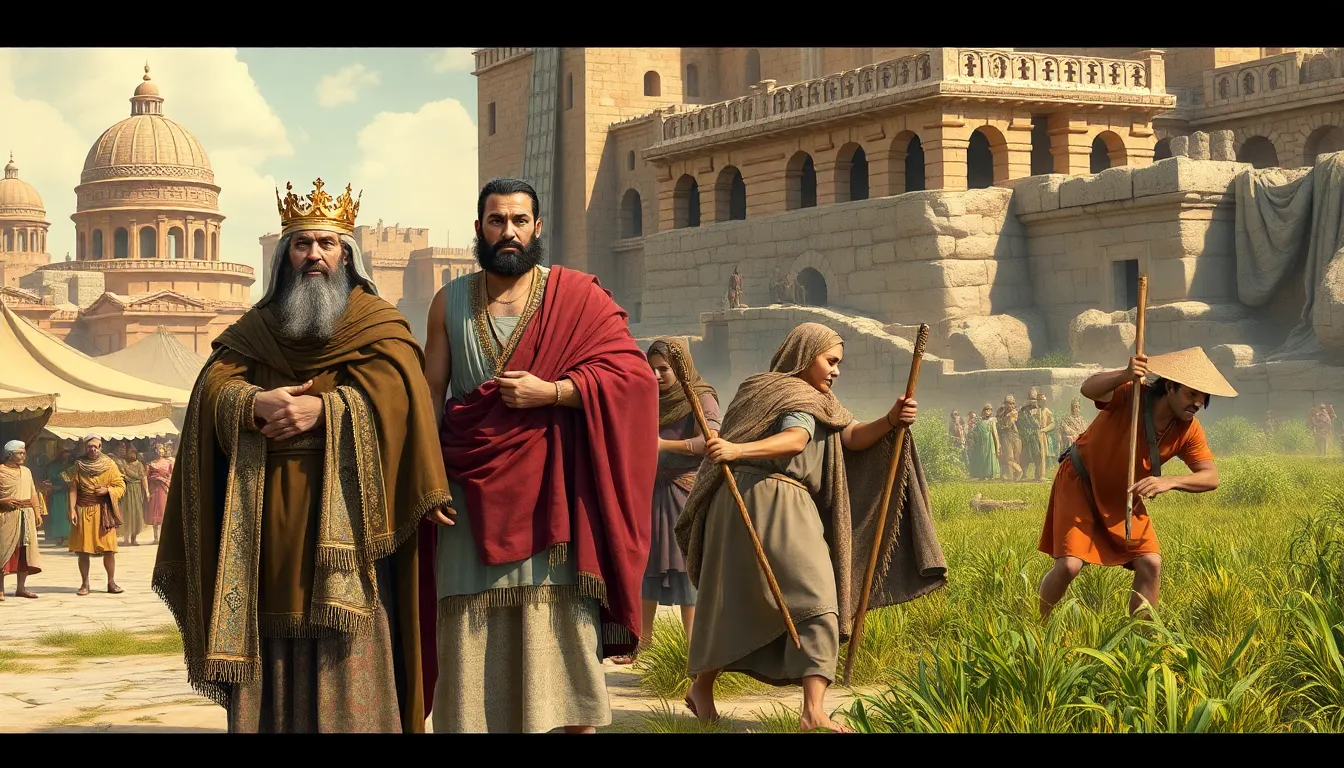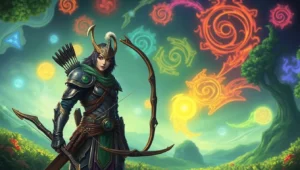Ancient civilizations have always been a treasure trove of fascinating themes that still resonate today. From the epic tales of heroism in Greek mythology to the complex social structures of the Egyptians, these themes offer a glimpse into the human experience that transcends time. Imagine a world where gods walked among mortals and every stone had a story to tell.
Exploring these ancient narratives isn’t just for history buffs. It’s like binge-watching a reality show where the stakes are life and death, and the drama is off the charts. Whether it’s the rise and fall of empires or the quest for knowledge, these themes reveal the timeless nature of human ambition, creativity, and, let’s be honest, a bit of chaos. Dive into the captivating world of ancient civilizations, and discover how their stories shape our understanding of ourselves today.
Table of Contents
ToggleOverview of Ancient Civilization Themes
Themes in ancient civilizations reveal significant aspects of human experience. Greek mythology features narratives of gods and heroes, showcasing ambition and moral lessons. Egyptian society illustrates beliefs about the afterlife and the importance of the pharaoh, intertwining politics with spirituality.
Social structures shape interactions within civilizations. In Mesopotamia, for instance, class hierarchies influenced daily life, dictating access to resources and power. The caste system in ancient India emphasized societal roles, affecting relationships and opportunities for individuals.
Art and architecture embody values and beliefs. Noteworthy constructions, such as the pyramids of Egypt and the Parthenon in Athens, communicate cultural priorities and issues of their time. These structures symbolize not only religious devotion but also technological prowess.
Trade played a crucial role in connecting civilizations, fostering cultural exchange. Silk Road interactions between empires introduced innovations, art, and philosophies. This exchange facilitated growth and development in various regions.
Conflict and conquest often dominated narratives. Wars between city-states in Greece shaped alliances and rivalries. Similarly, the expansion of the Roman Empire brought both cultural assimilation and resistance.
Environmental factors influenced ancient life distinctly. Geography dictated settlement patterns, agricultural practices, and resource management. The Nile River’s flooding enabled farming in Egypt, while the rugged terrain of Greece led to smaller, independent communities.
Themes in governance and law promote insight into human organization. Codified laws, such as Hammurabi’s Code, demonstrate early attempts at justice and order. These legal frameworks laid foundations for modern systems.
By examining these themes, an understanding of ancient civilization emerges, illustrating how past experiences shape contemporary life.
Social Structures

Social structures in ancient civilizations significantly influenced daily life, shaping relationships and societal norms. Hierarchies established order, while gender roles defined expectations within those structures.
Hierarchies and Class Systems
Class systems created distinct social tiers in ancient societies. Rulers and priests often occupied the highest echelons, wielding significant power and influence. Merchants and skilled laborers held a middle position, contributing to economic vitality. At the bottom, peasants and slaves performed essential labor, often without rights or recognition. Each class contributed uniquely to the culture and economy, creating interdependence among the tiers. Wealth accumulation, land ownership, and access to education further solidified these divisions, impacting life opportunities.
Gender Roles
Gender roles established expectations for men and women in ancient cultures. Men routinely engaged in politics, warfare, and trade, exercising authority in public spheres. Women typically managed households and children, often nurturing familial ties. However, some civilizations like Egypt allowed women greater rights, enabling them to own property and participate in commerce. Religious practices sometimes dictated additional roles, influencing participation in rituals. The variability in gender roles exemplified how different societies approached the dynamics of power and responsibility. Ancient gender norms still resonate in contemporary discussions on equality and social structure.
Religion and Spirituality
Religion and spirituality played pivotal roles in ancient civilizations, informing their social structures, politics, and daily lives. Various belief systems reflect humanity’s quest for understanding existence and the divine.
Polytheism vs. Monotheism
Polytheism dominated many ancient cultures, with civilizations like the Greeks and Romans worshipping multiple deities. Each god fulfilled specific roles, influencing agriculture, war, and family life. Monotheism emerged later, particularly in ancient Israel, emphasizing the belief in a single, all-powerful God. This shift shaped moral and ethical standards, as seen in texts like the Hebrew Bible. Diverse perspectives in these belief systems highlight the evolution of spirituality across time.
Religious Practices and Rituals
Religious practices varied significantly among ancient societies. Egyptians enacted elaborate ceremonies to honor their gods, including offerings and rituals like the Opening of the Mouth. Greeks celebrated festivals such as the Olympic Games in honor of Zeus, blending competition and devotion. Daily life often synchronized with spiritual observances, where prayer, meditation, and sacrificial rites marked significant occasions. These practices reinforced communal identities and underscored the importance of religion in shaping cultural narratives.
Economic Systems
Economic systems played crucial roles in ancient civilizations, shaping their societies and interactions. These systems encompass trade, agriculture, and land use, influencing not only daily life but also cultural developments.
Trade and Commerce
Trade and commerce served as vital economic drivers in ancient civilizations. Merchants exchanged goods across vast networks, enabling cultural diffusion. The Silk Road exemplified how trade facilitated connections between East and West, promoting the exchange of ideas and products. Markets emerged as bustling centers of activity, where diverse goods and services circulated, enhancing local economies. Additionally, currency systems began to take shape, allowing for standardized transactions that simplified trade practices.
Agriculture and Land Use
Agriculture constituted the backbone of ancient economies, determining settlement patterns and societal structures. Fertile land, particularly near rivers, enabled civilizations to thrive through farming. Techniques like irrigation showcased innovative approaches to maximize crop yields. Crop diversity, including grains and legumes, supported population growth and stability. Land ownership often correlated with social status, influencing power dynamics within societies. Understanding agricultural practices gives insight into how ancient communities sustained themselves and interacted with their environments.
Art and Architecture
Art and architecture in ancient civilizations reflect their cultural values and societal aspirations. These elements offer insights into their beliefs, priorities, and daily lives.
Iconography and Symbolism
Iconography conveys deep meanings through images and symbols. Ancient Egyptians utilized hieroglyphs to communicate religious and cultural narratives. In Greek culture, gods frequently appeared in artwork, symbolizing various human traits and elements of nature. Each figure carried significance, enhancing storytelling through visual representation. Society relied on these symbols to embody ideals like strength, wisdom, and sacrifice, influencing how they understood their world and their place within it. Art became a means of reinforcing communal identity through these shared symbols.
Architectural Innovations
Architectural innovations demonstrate the technological and artistic advancements of ancient communities. Egyptians mastered monumental construction, creating structures like the pyramids, which showcased both engineering prowess and religious devotion. Greeks introduced columns and symmetry, exemplified in structures like the Parthenon, emphasizing harmony and beauty. Romans revolutionized architecture with the development of the arch and concrete, facilitating the construction of expansive aqueducts and amphitheaters. Each civilization’s innovations not only served practical purposes but also expressed cultural heritage and aspirations, leaving lasting legacies evident in modern architecture.
The exploration of ancient civilization themes reveals profound connections to modern life. These timeless narratives and structures continue to influence how society perceives ambition creativity and governance. By understanding the intricate interplay of social dynamics art and spirituality in ancient cultures readers can appreciate their lasting impact on contemporary values and relationships.
Engaging with these themes not only enriches knowledge of history but also encourages reflection on current societal issues. The lessons drawn from ancient civilizations serve as a reminder of humanity’s shared journey and the ongoing quest for meaning in an ever-evolving world.





